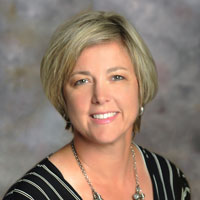How Teamwork Between Army and Civilians Can Make a Difference in Time of Crisis
|
Major Stephanie Parks, DNP, CRNA |
May 2020 marks the 112th birthday of the United States Army Reserves and an historic time for our military and our country. Traditionally, military healthcare professionals have deployed with soldiers and provided care for wounded men and women both on and off battlefields. From point-of-injury wounds in the mountains of Afghanistan to robust military medical treatment facilities in the United States, Army healthcare providers are prepared to care for our wounded soldiers on any mission and in any environment.
Our new battlefield is fighting the ravages of COVID-19 pandemic within the United States. In response, the U.S. Army has deployed 15 Urban Augmentation Medical Task Forces (TF) to join our civilian healthcare colleagues in a unified response to this national emergency. The TFs comprise reservist physicians, CRNAs, RNs, LPNs, MDs, nurse practitioners, physician assistants, respiratory therapists, dieticians, mental health specialists, and other support personnel to join with our civilian healthcare colleagues in a unified response to this national emergency. As different TFs began assembling in multiple locations within the United States, the magnitude of this historic event was soon realized. The great nation that we swore to defend was under attack by an enemy we had never fought, playing by rules of engagement never before seen. We were planning our response to defend the ones we loved the most…our own citizens.
An ever changing enemy demands an agile response, and my TFs mission became clearer as we reached Philadelphia. Most of the Task Force’s members were strangers prior to mobilization but arrived in the City of Brotherly Love as an Army of One. Unlike the previous Task Forces, ours was split into smaller units immediately as we began staffing seven different medical facilities in Philadelphia. Never before had military members been deployed to U.S. hospitals to care for civilian patients, and my team was selected to assist civilian healthcare colleagues at the one area hospital with the greatest number of patients in need. The response of the hospital was overwhelmingly positive, and our orientation was expedited. Within days, my strike force of two certified registered nurse anesthetists (CRNA), two registered nurses (RN), and four licensed practical nurses (LPN) arrived at our assigned hospital for our first shift. The military uses CRNAs in many roles as independent providers and often in extreme austere environments where we are the only anesthesia support for an entire region. The CRNAs on my strike force were assigned to the Rapid Response Team and worked beside civilian anesthesiologists, respiratory technicians, and CRNAs as we responded to medical emergencies throughout the facility.
Though our backgrounds and training were dramatically different, our common goal and path taken to arrive at this same location was in fact the same. We quickly traded our military uniforms for hospital imprinted scrubs and became part of the team united by our patriotism and professional commitment to care for patients. Shift after shift, we made rounds through the hospital and introduced ourselves as Army providers. Our team wanted the people we worked beside as well as the patients we cared for to know that our military was there for them and together we were going to overcome the COVID-19 pandemic. Though our mixed healthcare team formed owing to a national emergency, our commitment to each other and our civilian patients forged a bond and showed the world that we are still one.



